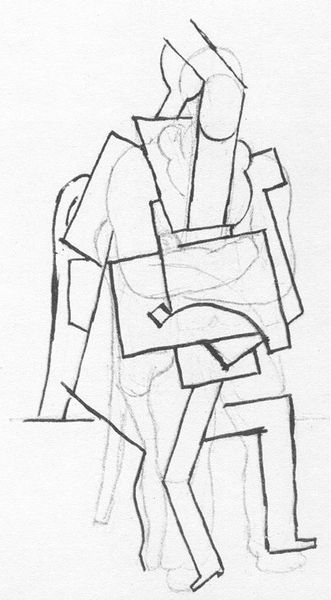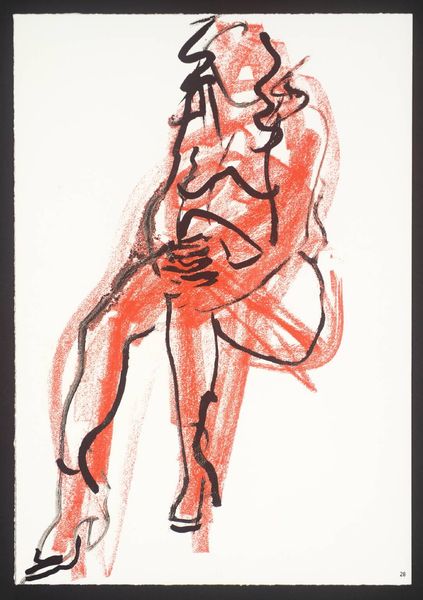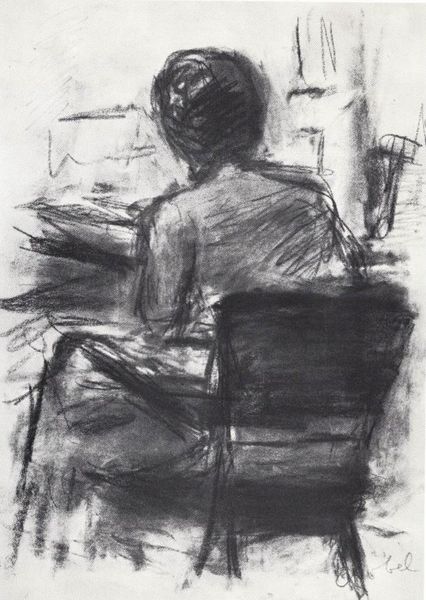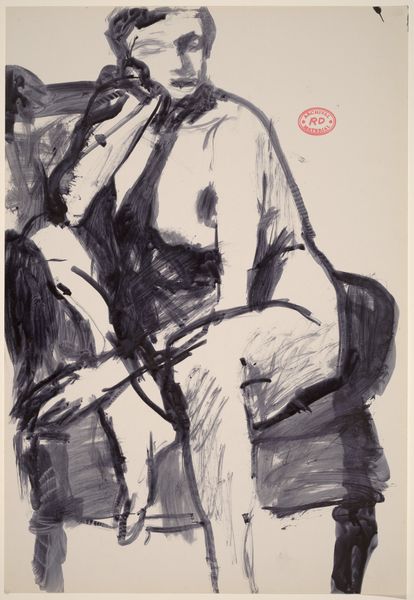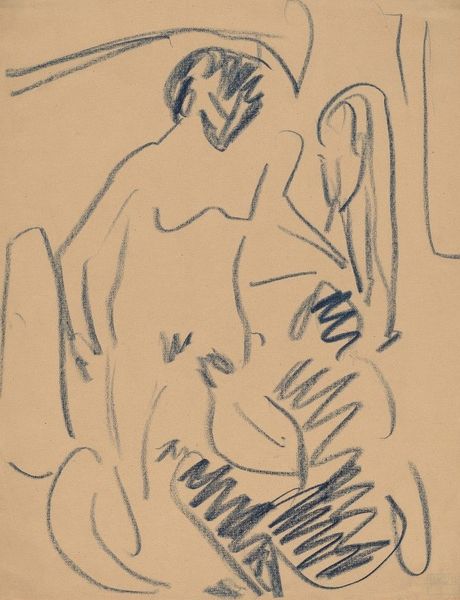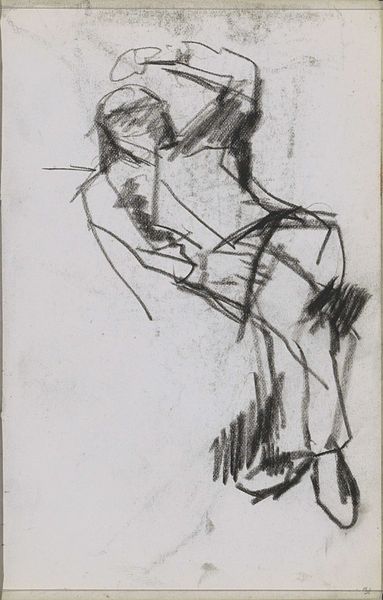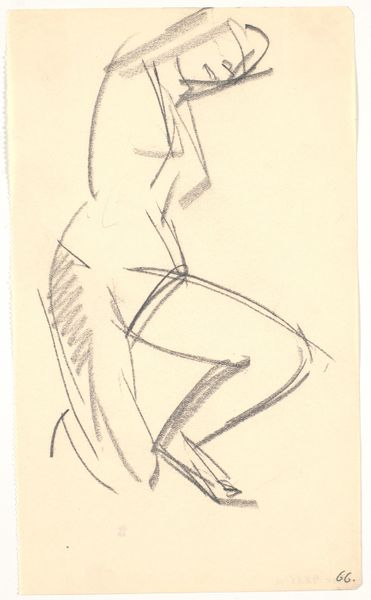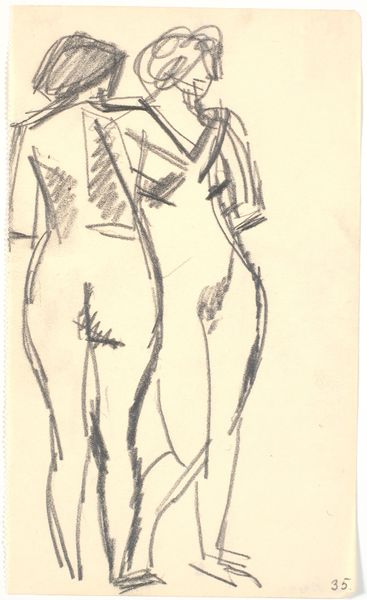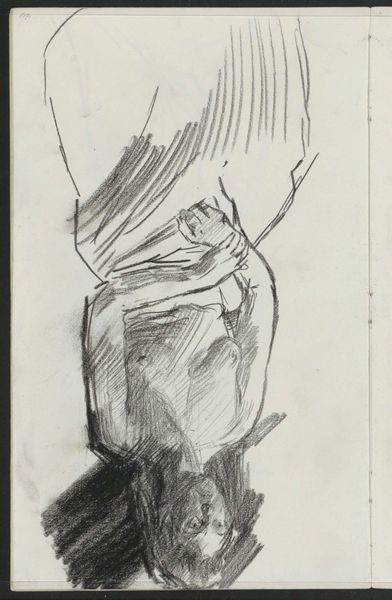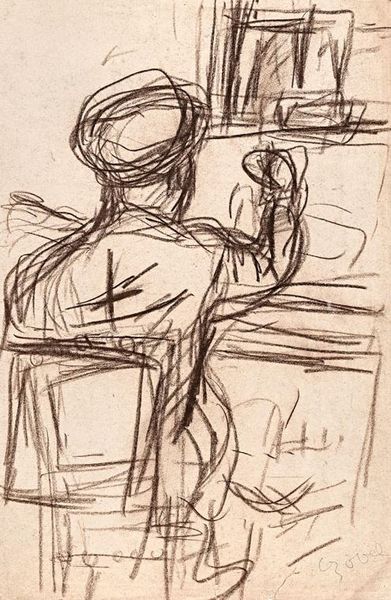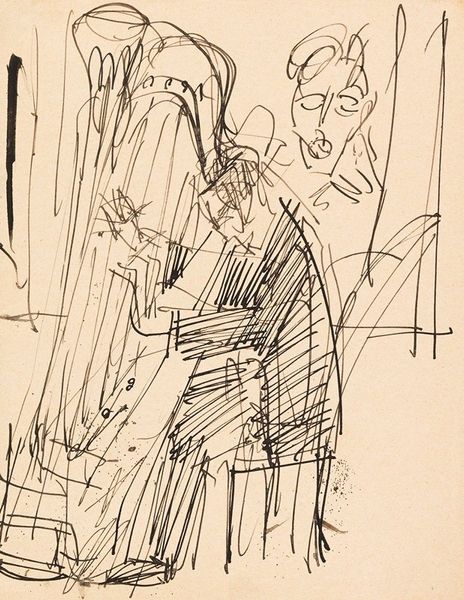
drawing, print, charcoal
#
portrait
#
drawing
# print
#
figuration
#
charcoal
#
modernism
Dimensions: 137 mm (height) x 91 mm (width) (Plademaal)
Editor: This drawing, dated between 1553 and 1619, is called "Den hellige Vilhelm af Aquitanien" by Hieronymus Wierix. It's made using charcoal for both drawing and print. It has a certain lightness, almost like a fleeting memory. How should we read the relationship between the form and its composition? Curator: Let us consider the interplay of line and void. Observe the confident strokes defining the figure and the chair, how they create a sense of depth, albeit one that defies traditional perspective. There is a conscious deconstruction of form that modernism embraced, wouldn’t you agree? Editor: Yes, definitely. I also notice the limited tonal range. Does the artist purposefully restrict the shades to highlight the line work and drawing gestures? Curator: Precisely. The monochrome palette eliminates the distraction of color, directing our focus to the relationships between light and shadow, form and ground. The artist emphasizes the essence of the subject rather than representational accuracy, thus achieving the desired modernistic aesthetics. It appears the intention is not verisimilitude but rather a more expressive representation of form, and through that form, perhaps character. Editor: So it’s the very construction of the figure, the application of line and shadow, that truly carries the work's meaning. Thanks, it's really valuable to break it down like this. Curator: Indeed. The material’s raw quality—charcoal on paper—becomes integral to its aesthetic power. Hopefully, with continued inquiry, this formal method brings you ever-closer to revealing a piece's artistic essence.
Comments
No comments
Be the first to comment and join the conversation on the ultimate creative platform.

